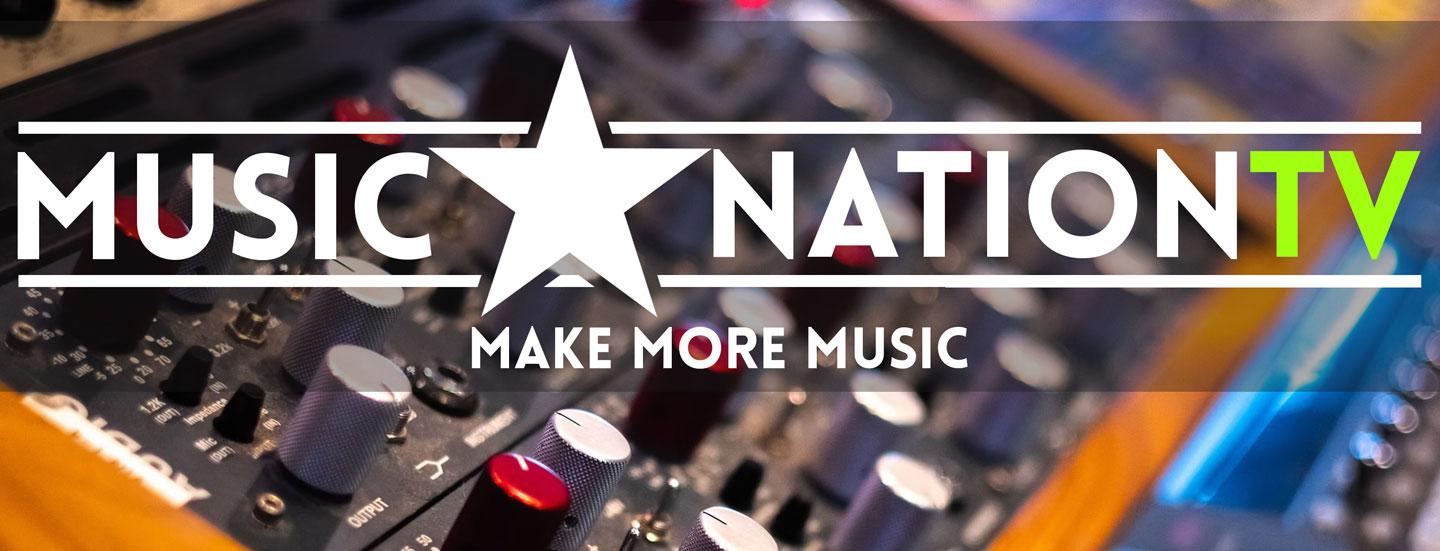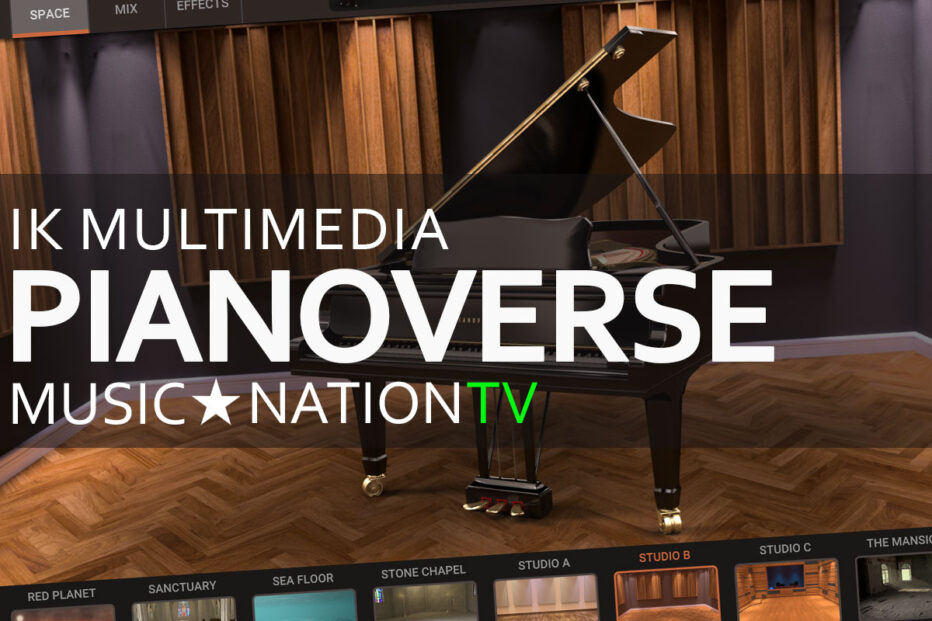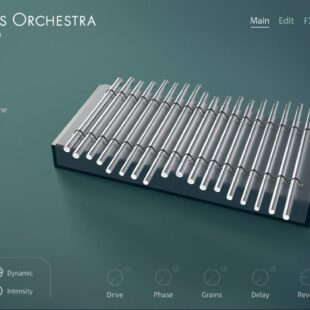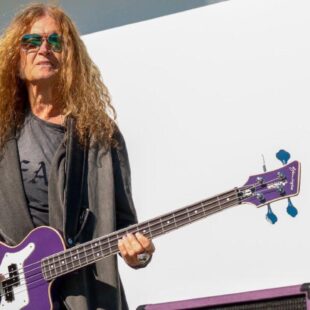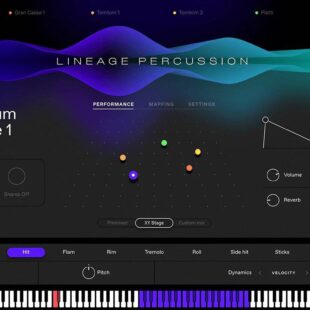IK Multimedia Pianoverse – Limitless Possibilities
Welcome to Music Nation TV. IK Multimedia achieved significant success with their previous MODO Drum and Bass libraries, pushing the boundaries of algorithmic virtual instruments. Their latest offering, Pianoverse, presents an alternative to the more conventional live sampling approach by utilizing “robot” technology to capture the subtle nuances of the instrument with greater accuracy. It certainly appears to be a promising development.
Arguably the world’s most popular and recognizable instrument, the piano holds a central position for composers and songwriters. Although its fundamental design and sonic characteristics have remained unchanged throughout its history, recent software developers have made various attempts to fully capture its power, often resulting in somewhat one-dimensional outcomes.
IK Multimedia introduces a fresh approach to the crowded market with Pianoverse, a sandbox-style platform for hosting DLC piano models. Focusing on extended customisation and effect processing, Pianoverse looks to provide plenty of options for musicians and producers alike.
The Piano Universe
Pianoverse is a sandbox platform for hosting downloadable piano models. It features an in-depth set of functions and controls universal for all models, with a strong emphasis on sound design at its core.
Unlike the traditional method of piano sampling, where each note is recorded at fixed velocities across the range, IK Multimedia employs robot technology to sample velocities individually at specific timbre changes, a process known as ‘Just Noticeable Difference.’ This approach focuses on capturing the piano’s tonal nuances that exhibit audible changes rather than adhering to predetermined note intervals.
Furthermore, considerable effort has been invested in pairing the samples with a set of tailored environments called ‘Space,’ which significantly influences the characteristics of the piano models based on their location.

As of the time of writing, four DLC instruments are available, including the NY Grand (a 9′ Steinway concert grand), Concert Grand YF3 (a 9′ Yamaha CFII concert grand), Black Diamond (a 9′ Bosendorfer concert grand), and Royal Upright Y5 (a Yamaha U5 upright piano). An additional four models are expected to become available in the near future.
Pianoverse offers a monthly/annual subscription priced at $14.99 per month or $149.99 per year. Alternatively, you have the option to purchase each model individually for $129.99. Whether you love or dislike subscription models, they offer the advantage of the flexibility to cancel at any time and pay only when you require the service.
The Interface
Pianoverse’s design adopts a pleasingly modern flat style that should be familiar to those who have used the Syntronik range. It’s both clear and well-organized, with some controls mirrored for added convenience.
Upon launching the software, you’ll be greeted with a browser interface that displays your current DLC collection. It also provides categorized presets, each accompanied by a brief text description. A filter system is available to help you select the appropriate mood, and you can easily build up a collection of your favourite presets using a star rating system.
Once you’ve selected and loaded a preset, you’ll enter the main operation screen. Here, you’ll see an animated image of the chosen model, with global controls located below. These controls are divided into two subcategories: “Master” and “Model.” The “Master” page includes fundamental settings such as pitch tuning, string tone, and various effects like compressor, EQ, and space levels. On the other hand, the “Model” page offers more model-specific function controls for aspects like lid position, velocity, and filters.
At the top of the graphical user interface, you’ll find elements related to sound design and system options. The “Space” section provides environment presets, “Mix” allows you to balance the effect and the raw piano sound, and “Effect” enables the application of additional insert and send effects. You’ll also find a volume control and a MIDI panic button here, along with a settings menu for adjusting MIDI CC (Control Change) and disk streaming resource settings.
The Sound
Judging a piano tone is very subjective. I felt the current piano models all lean more towards a dryer, less dynamic feel. The clear intention is to present a less ambient base sound that will sit better in the Space environment effects.
The pianos all sound very nice, though I needed to adjust the note release time to get it sitting better for my ear. I found holding a note or chord sounded warm and full of character, but on the release, the piano simply stops dead silent. This may not cause issue with some players, but for me the default settings are too gated sounding.
I found applying the Amplitude Envelope Release generously significantly enhances the note tail, and with the right balance of sample release added, together create a very playable and realistic tone. It’s worth noting that this control is tucked away at the far end of the model control section and can be easily overlooked. Finding the right balance between the Amplitude Envelope Release and the release sample volume is crucial for achieving the most authentic results.
Though the number of controls one has over the instrument tone is impressive, the piano lid toggle seems to make no difference at all, even when placed in the most atmospheric Space location. Meanwhile, the good selection of cut-off and resonance filters are extremely potent and need to be used sparingly to avoid the piano sounding artificial and boxy.
The Tone Shift is a very interesting control I still don’t quite fully understand. It alters the sample’s root note relative to its key mapping, thereby making it sound darker or lighter. I discovered that a slight adjustment in either direction added a considerable amount of character to the overall sound, mimicking the effect one might anticipate from the non-working piano lid function. Whatever it does, I like it.
Applying the Space effect is the key to Pianoverse, and really brings the models to life, though there is a distinct feeling of a rather dry and gate piano sitting underneath a wall of reverb, typical of convolution reverbs vs actual location recordings. Again, for most situations, this won’t matter, but a pianist used to playing in large lively environments might cringe a little at this.
The DLC piano tones themselves are all very nice, particularly the Black Dimond Bosendorer with its signature beefy low end. All have fantastic dynamic range and playability. The robot sampling technique seems to perform wonders, with wonderful tone and clarity across the full range of all the DLC models.
Sound Design
One of the core tenets of Pianoverse is the physical environment effect called Space. This feature effectively situates the piano model within a variety of predefined settings, offering a broad array of options, including locales like a garage, nightclub, recording studio, and even a monastery. Moreover, you’ll find some more unconventional and imaginative settings such as underwater, floating on an iceberg, and sitting on the surface of the red planet.
In addition to the Space preset selections, there’s an entire effects page at your disposal, comprising one send and two insert slots. This section boasts twelve shared effect options encompassing convolution and plate reverbs, delays, saturation, filters, and more.

The Space presets to my ear appear to be constructed using the provided effects, effectively meaning you can apply a Space preset and then apply a second set of the same effects, in essence, double-dipping. Furthermore, you have control over close or far microphone placement, EQ and compressors, envelope adjustments, two LFOs, and an additional master tone and compressor.
While I very much like the Space treatment, as mentioned earlier, there is a noticeable ‘effect overlay’ sound typical of convolution reverbs. This artefact is more apparent if you play other libraries where the instruments have been actually recorded in the locations, such as Spitfire Audio Hans Zimmer Piano.
In general, the effects are impressive, with a particular highlight being the Convomorph Reverb which sounds outstanding. The Reelab effect is especially intriguing also, offering the ability to create aged-sounding results, while the Shimmer effect adds a unique and captivating quality that invites experimentation.
The preset options are quite diverse, although they tend to be overly focused on unusual and innovative sounds. I spent too much time wading through the strange preset names hunting for the standard default piano tone. Ortho you can certainly star-favourite your preferred preset, IK Multimedia should highlight or put to the top of the list the preset that best represents the piano in its most natural state.
For me, the vast majority of effects on offer are interesting and somewhat entertaining to preview, but in the time I’ve had Pianoverse I mainly stuck to the studio presets.
However, if you’re inclined towards sound design, this platform offers a wealth of possibilities. The Space presets serve as excellent starting points for various projects, and with the abundance of filters and processing options available, it’s remarkably easy to generate interesting textures.
Performance
Unfortunately, not everything is rosy in the Pianoverse. Loading times are notably sluggish, even on our SSD installation, with load times averaging between 30 to 45 seconds per instance. I found this to be quite frustrating, especially when auditioning piano models for various projects. It felt long enough for me to brew a cup of coffee as new patches loaded.
Fortunately, you can continue playing the old patch while the new one loads, allowing you to stay productive. Nevertheless, some significant optimization is imperative.
Once loaded, Pianoverse performs exceptionally well. I encountered no performance issues, even when loading the signal chain with a considerable number of effects. Everything felt very responsive and immediate. The controls were highly responsive, contributing to an overall snappy experience.
Storage space should also be taken into consideration, particularly if you intend to acquire the full range of DLCs as they become available. Each DLC weighs in at approximately 25 gigabytes, so it might be a prudent idea to invest in a dedicated SSD drive with a capacity of 200 gigabytes or more.
Conclusion
I’ve had a great time testing Pianoverse and found it to be easy to use, flexible and very playable. It’s certainly one of those ‘loose track of time’ libraries, for sure.
As a pianist, I don’t find much beyond a passing interest in the Space effect patches. While it’s entertaining to hear a piano played underwater or on Mars, it’s not something I would use regularly. I’d prefer to see less emphasis on unconventional and quirky features and more focus on real-world piano scenarios. This could involve options like more microphone choices and positions or incorporating some prepared effects to enhance flexibility.
The only major issue right now is the extremely slow loading times. I’m hopeful that this can be addressed or optimized with future updates.
It’s fantastic news IK Multimedia offers Pianoverse as both subscription and a-la-carte purchasing options. For me, subscriptions are fantastic as you can simply pay when you need the software. On the other hand, outright owning a core instrument of this quality so it’s always available might be more important to some users.
There are also other alternative subscription services to consider, such as EastWest Composer Cloud, which offers a wide variety of pianos, orchestral, synth, and world instruments for a similar price. Roland Cloud, UVI Sonicpass, and Reason Studio offer similar services, although they are not as piano-focused, they are much more versatile and feature-rich.
IK Multimedia boasts an extensive catalogue of outstanding instruments, including Syntronic, Miroslav, MODO, Sampletank, T-Racks, AmpliTube, the extensive Custom Shop range, and now Pianoverse. Offering a subscription to access the entire range would certainly make the brand a more competitive option.
Pianoverse and the current DLC pianos are versatile and beautiful-sounding and deliver plenty of musicality. Whether you’re a pianist aiming to capture the essence of a real grand piano or a music producer seeking contemporary affected piano tones for your tracks, Pianoverse will have you covered.
I am excited to see what’s coming down the pipeline for Pianoverse, I love the idea of building a centralised collection of world-class instruments. In terms of sound palette, customisable options and easy-to-use interface Pianoverse is most definitely at the top of the game.
For full details on Pianoverse purchasing and subscription options, visit www.IKMulitimedia.com

Like the review? Shout us a cup of coffee!
